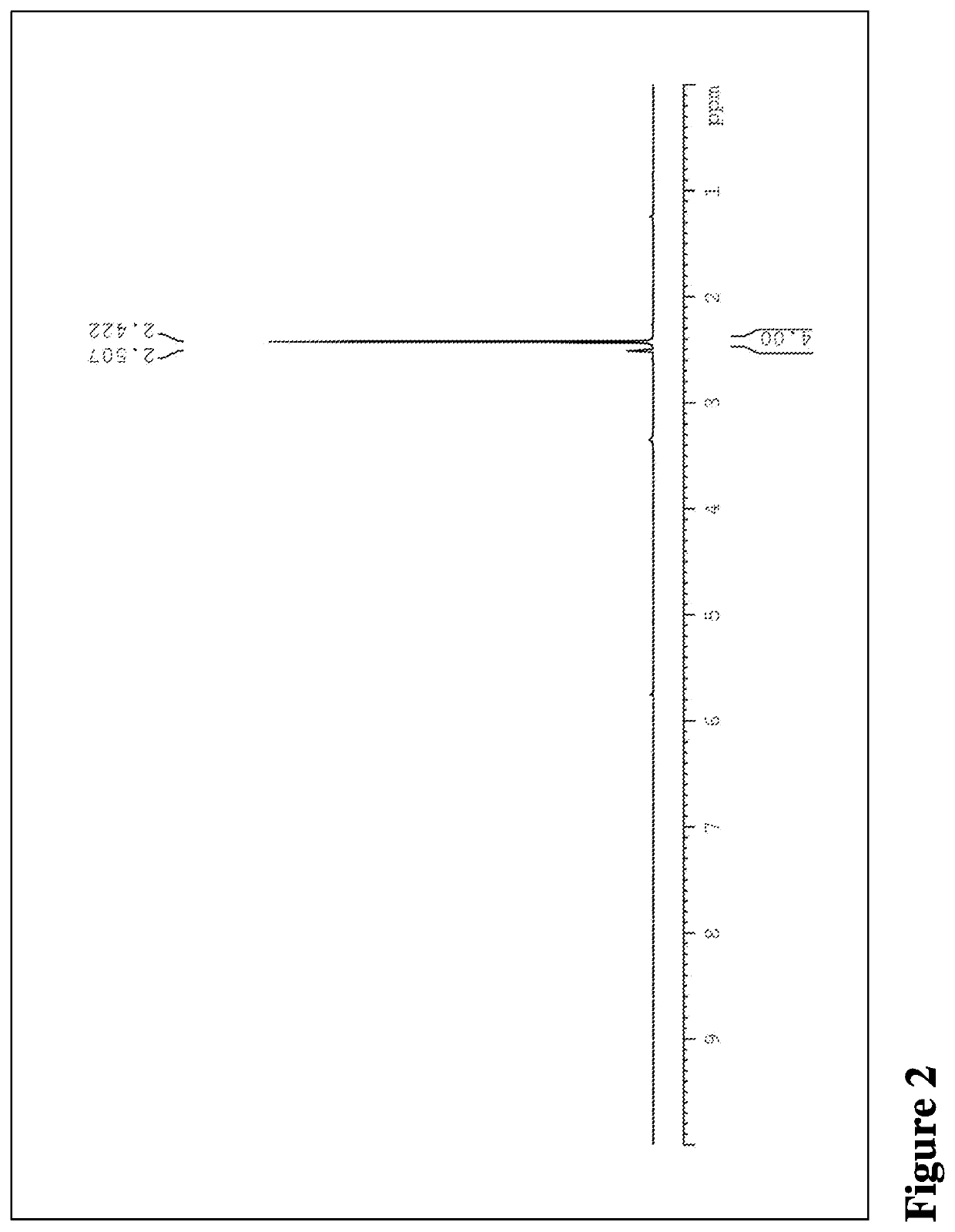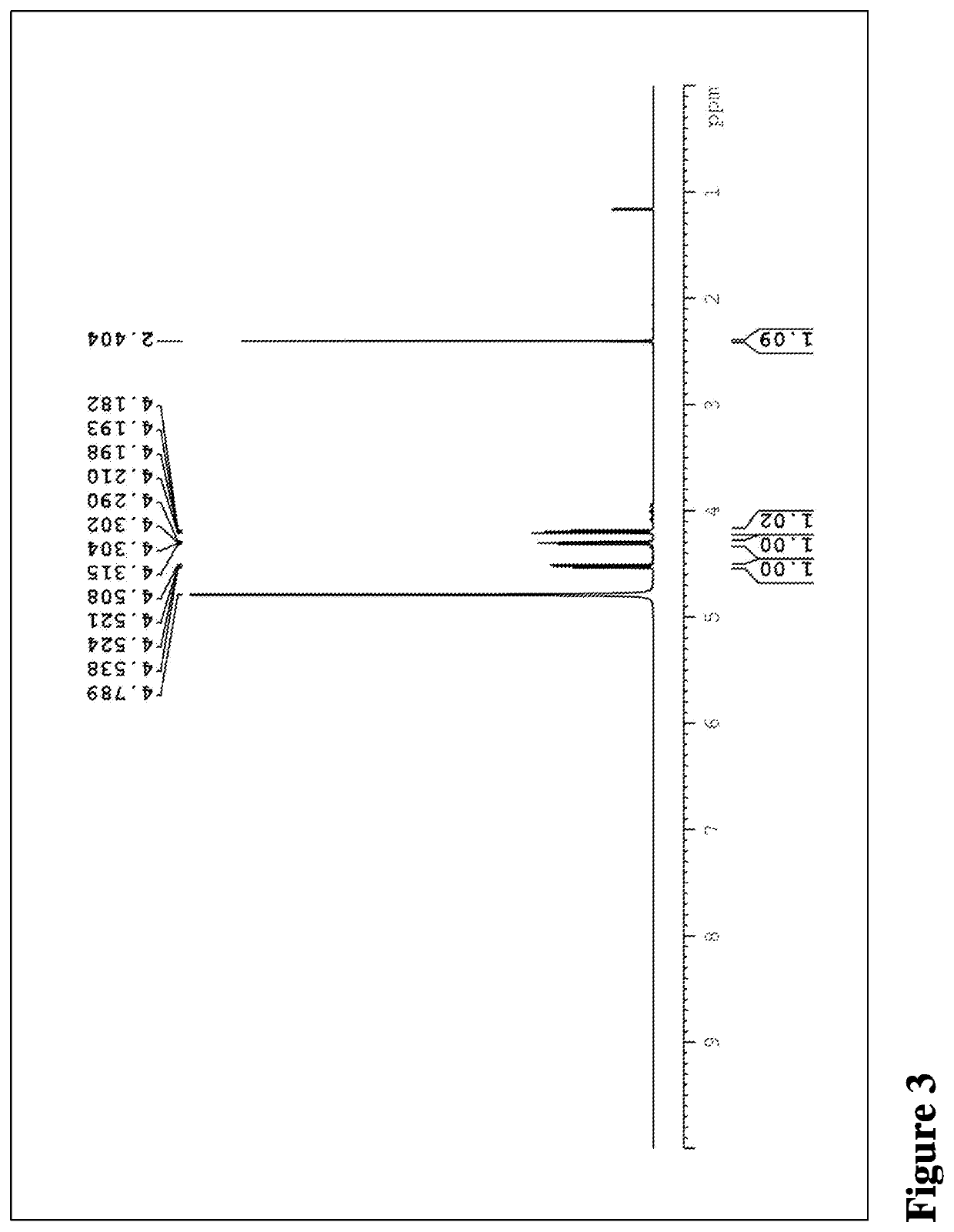Salts of cycloserine compounds and applications thereof
a technology of cycloserine and salt, which is applied in the field of salt of cycloserine compounds, can solve the problems of limited use of d-cycloserine, damage to the bacterial cell wall, seizures, etc., and achieve the effects of reducing or avoiding symptoms, signs or causes of the condition, and reducing or minimizing one or more symptoms
- Summary
- Abstract
- Description
- Claims
- Application Information
AI Technical Summary
Benefits of technology
Problems solved by technology
Method used
Image
Examples
example 1
on of D-cycloserine Succinate Salt (4:1) Form
[0205]D-cycloserine (250 mg) and succinic acid (145 mg) was added in 2 mL deionized water and stirred at 800 rpm under room temperature. The solution was added dropwise into 50 mL isopropanol and stirred at 800 rpm under room temperature for 10 minutes. The mixture was filtered and dried in vacuum to obtain the D-cycloserine succinate (4:1) salt form (yield=315.4 mg, 79.8%). The salt thus obtained was analyzed by 1H nuclear magnetic resonance (1H-NMR), X-ray powder diffraction (XRPD) and thermoanalyses (including TGA and DSC analyses) as described herein.
[0206]1H-NMR: 1H-NMR analysis was performed on Bruker Fourier 400 (Bruker) in a deuterated solvent such as dimethyl sulfoxide or deuterium oxide at 25° C.
[0207]XRPD: X-ray powder diffraction patterns were obtained on D8 ADVANCE (Bruker AXS Gmbh, Germany). Samples were scanned in continuous mode from 4-45° (2θ) with step size of 0.02° on a spinning stage at 40 kV and 40 mA with Cu Kα radia...
example 2
on of D-cycloserine L-tartrate (1:1) Salt Form
[0211]D-cycloserine (1000 mg) and L-tartaric acid (1470 mg) were added in 10 mL and 2 mL deionized water respectively, and stirred at 800 rpm under room temperature respectively. When they were dissolved, the L-tartaric acid solution was added into D-cycloserine solution. The resulting solution was added dropwise into 200 mL isopropanol and stirred at 800 rpm under room temperature for 10 minutes. The mixture was filtered and dried in vacuum to obtain the D-cycloserine L-tartrate (1:1) salt form (yield=2047.9 mg, 82.91%).
[0212]The 1H-NMR, XRPD and thermoanalyses results of L-tartaric acid and the salt obtained by the method described in Example 2 above are shown in FIGS. 13 to 20.
example 3
on of D-cycloserine Maleate (1:1) Salt Form
[0213]D-cycloserine (1000 mg) and maleic acid (1136.8 mg) were added in 8 mL deionized water and stirred at 800 rpm under room temperature. The solution was added dropwise into 200 mL of 70% ether in ethanol and stirred at 800 rpm under room temperature for 10 minutes. The mixture was filtered and dried in vacuum to obtain the D-cycloserine maleate (1:1) salt form (yield=1563.7 mg, 73.18%).
[0214]The 1H-NMR, XRPD and thermoanalyses results of maleic acid and the salt obtained by the method described in Example 3 above are shown in FIGS. 21 to 28.
PUM
| Property | Measurement | Unit |
|---|---|---|
| Hygroscopicity | aaaaa | aaaaa |
| Composition | aaaaa | aaaaa |
| Ratio | aaaaa | aaaaa |
Abstract
Description
Claims
Application Information
 Login to View More
Login to View More - R&D
- Intellectual Property
- Life Sciences
- Materials
- Tech Scout
- Unparalleled Data Quality
- Higher Quality Content
- 60% Fewer Hallucinations
Browse by: Latest US Patents, China's latest patents, Technical Efficacy Thesaurus, Application Domain, Technology Topic, Popular Technical Reports.
© 2025 PatSnap. All rights reserved.Legal|Privacy policy|Modern Slavery Act Transparency Statement|Sitemap|About US| Contact US: help@patsnap.com



